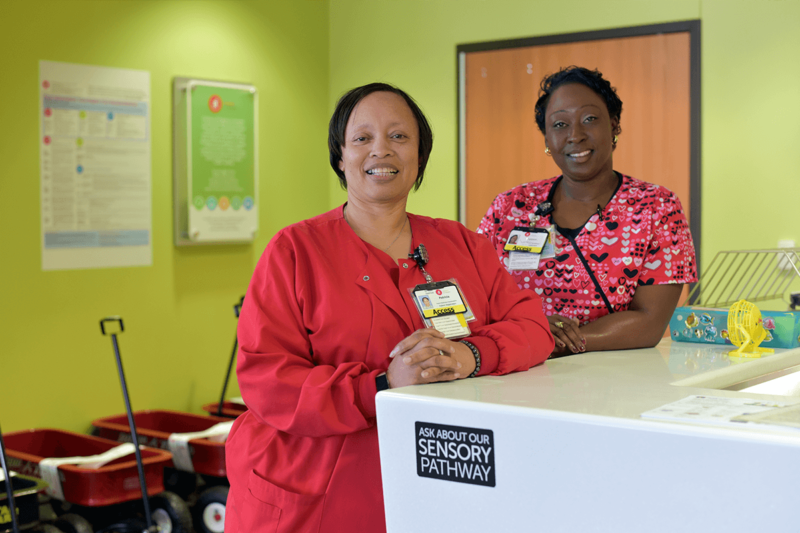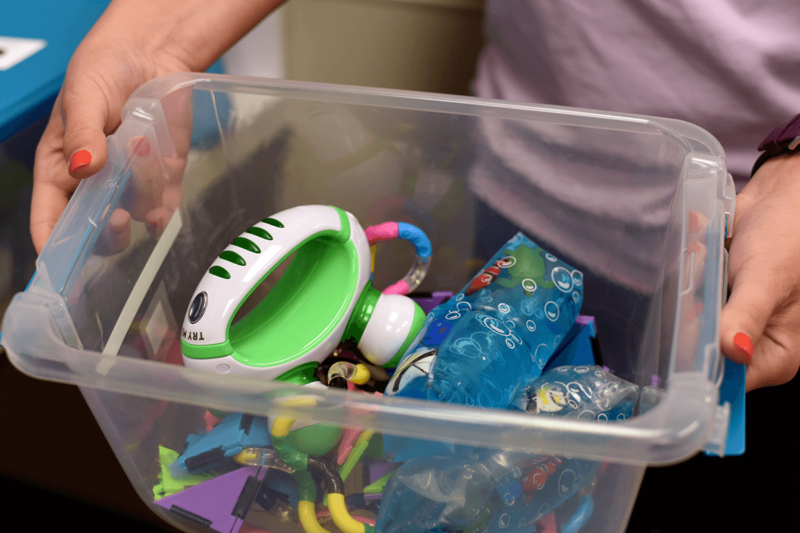Small plates labeled “Sensory Pathway” dot entryways throughout Children’s of Alabama hospital. They’re for patients like MollyAnn Sawyer, who might experience discomfort in loud, stressful settings. “Her doctor recommended the program,” says MollyAnn’s mother, Kayla Sawyer Dupre. “And we’re so thankful he did.”
Less than a year ago, Children’s implemented the Sensory Pathway program — a program specifically designed for patients who have medical conditions such as autism or ADHD and may be bothered by loud or bright environments. Since introducing the program, patients like MollyAnn have been able to enjoy a more comfortable experience in a usually high-stress setting.
“Last time, she didn’t even let me go back with her to surgery. She said, ‘I got this, Mommy,’” Kayla recalls with a smile.



The program is offered for children who are admitted to the emergency department as well as patients receiving regular care. Emily Trentacoste, a registered nurse within the emergency care department, helps oversee much of the Sensory Pathway program. As someone who has a family member with sensory sensitivities, Emily says she’s glad more medical facilities are beginning to accommodate the needs of patients like MollyAnn.
“We talk to them at a level they understand,” Emily explains. “That’s kind of the whole point of Sensory Pathway. It’s about finding a way to communicate with a child on their level so you can meet more of their needs, help them understand what’s going on and make this a less stressful environment.”
Once a parent or guardian says that their child might need to be on the sensory pathway, a staff member does a short evaluation to determine how to best handle the child’s needs. From there, all hospital employees who come in contact with the child are made aware that the patient may need special accommodations.



Jason Brooks, a charge nurse at Children’s, says usually when a patient is identified as having sensory sensitivities, they are taken away from the sometimes-noisy waiting room and able to receive preliminary care from a private waiting room that has less stimuli. From there, patients can receive resources like noise-cancelling headphones or weighted blankets to help calm their nerves.
Transitioning from the waiting room to the operating room, Emily says, can often cause stress for some children. To help ease any tension, patients can take advantage of Sensory Pathway resources during that transition as well.
“For some kids, it’s noise that really bothers them,” Emily says. “For others, it might be tactile stimulation or auditory stimulation. It just all depends on what those triggers might be.”



Once a patient is identified as being on the Sensory Pathway, an identifier is placed on their door so all those who enter their room will know to pay extra attention to their movements, like opening and closing doors quietly and taking extra care not to overwhelm the patient.
Throughout her experience at Children’s, Kayla says it was evident that everyone on staff knew of MollyAnn’s sensitivities. Even the custodian, Kayla says, took the time to get to know MollyAnn and do everything in his power to foster a calm environment. “He didn’t just come in and clean up,” Kayla says. “He got to know her. All their staff, they’re all amazing.”
As the staff continues to look for ways to meet the needs of patients with sensory sensitivities, Emily says she hopes society will follow suit and work to better understand those with sensory sensitivities. “I think as people learn more and more about how non-verbal patients communicate, we’ve been able to figure out ways to help them communicate and figure out what actually works to make them more comfortable,” she says. “It’s all about understanding.”
Children’s of Alabama is located at 1600 Seventh Ave. S., Birmingham AL 35233. To learn more about their various programs and patient offerings, visit them online at childrensal.org or call (205) 638-9100.
This article is sponsored by Children’s of Alabama. Photography by Sarah Cook.


















